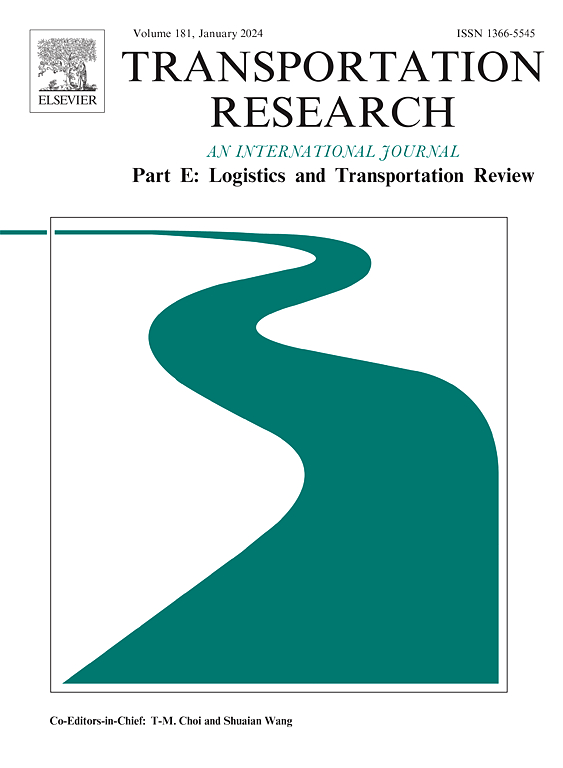Modeling and simulation of crowd dynamics at evacuation bottlenecks during flood disasters
IF 8.3
1区 工程技术
Q1 ECONOMICS
Transportation Research Part E-Logistics and Transportation Review
Pub Date : 2025-04-12
DOI:10.1016/j.tre.2025.104064
引用次数: 0
Abstract
Investigating and simulating the impact of floods on crowd dynamics at evacuation bottlenecks is essential, given the increment of the intensity of these disasters due to climate change. Previous studies have primarily focused on flood risk assessment for crowd evacuation during flooding. The complex interactions between pedestrians and water flow near evacuation bottlenecks have been rarely investigated. In this work, we developed a pedestrian-water flow coupling evacuation model by incorporating the social force model with a hydraulic model. The optimal parameter combination for the coupled evacuation model was identified through a sensitivity analysis. The final parameter tuning was conducted through a model calibration based on controlled evacuation experiments under various inflow depths. The proposed model is employed to examine how exit width, exit position, and inflow volume affect the evacuation efficiency of crowds in a flooded environment. The findings indicate that the distribution of exit positions has a prominent impact on evacuation efficiency in an exit width of 1.0 m for different inflow depths, while this impact manifests uncertainty for other exit widths. The coupling evacuation model proposed in this work will offer valuable insights for formulating scientific evacuation plans or emergency response strategies in flood-prone areas.
求助全文
约1分钟内获得全文
求助全文
来源期刊
CiteScore
16.20
自引率
16.00%
发文量
285
审稿时长
62 days
期刊介绍:
Transportation Research Part E: Logistics and Transportation Review is a reputable journal that publishes high-quality articles covering a wide range of topics in the field of logistics and transportation research. The journal welcomes submissions on various subjects, including transport economics, transport infrastructure and investment appraisal, evaluation of public policies related to transportation, empirical and analytical studies of logistics management practices and performance, logistics and operations models, and logistics and supply chain management.
Part E aims to provide informative and well-researched articles that contribute to the understanding and advancement of the field. The content of the journal is complementary to other prestigious journals in transportation research, such as Transportation Research Part A: Policy and Practice, Part B: Methodological, Part C: Emerging Technologies, Part D: Transport and Environment, and Part F: Traffic Psychology and Behaviour. Together, these journals form a comprehensive and cohesive reference for current research in transportation science.

 求助内容:
求助内容: 应助结果提醒方式:
应助结果提醒方式:


